Breathe In, Breathe Out
How has COVID-19 impacted the respiratory health of millennials for the long haul? A new study by Northwestern University and the American Lung Association will follow 4,000 adults over the next five years to find out.
Scientists and engineers unlock the body’s healing powers. By Emily Ayshford
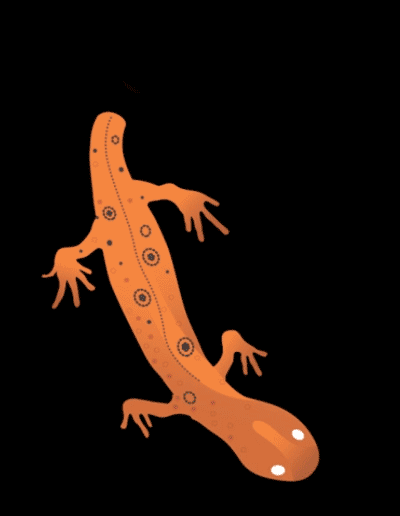
It is somewhat miraculous, the wonders that nature can work.
Axolotl salamanders, for example, can regrow their spinal cord, heart and limbs. Many crab species can regrow claws. And a chopped-up panther worm can completely regenerate from each segment.
The human body can do a lot, too, knitting skin and bones back together after an injury. But there are limits. Sever the spinal cord, for example, and the damage is almost always permanent.
But Northwestern researchers, including Samuel Stupp, Guillermo Ameer and John Kessler, are on the cusp of some superhuman breakthroughs, pushing the body’s boundaries through advances in regenerative medicine and engineering, with the goal of bringing healing and hope to countless people.
Over the past year, Stupp ’77 PhD has heard from thousands of people who have seen the stunning effects of his latest regenerative therapy, including many who have suffered spinal cord injuries as a result of car accidents and gunshot wounds.
“Not once in 15 years, in all my time spent looking for a way to fix me, has any [research] given me the amount of hope that this one has,” one note said.
The videos of Stupp’s therapy, posted in 2021, speak for themselves. In the first, a mouse paralyzed by a severe spinal cord injury drags its back legs. In the second — after receiving Stupp’s injectable therapy — a previously paralyzed mouse moves its back legs, crawling almost normally across the floor. (See video below.)
For the nearly 300,000 people living with spinal cord injuries in the United States, modern medicine has offered little treatment beyond physical therapy. But Stupp’s breakthrough might finally offer a ray of hope.
For Stupp, the results of the therapy are the culmination of more than two decades of work in regenerative medicine. In fact, in 2008 Stupp first saw mice regain a limited ability to walk after their moderate injuries were treated with a much earlier version of the therapy, the result of a collaboration with Kessler.
But repairing parts of the body that do not regenerate on their own is extremely complex. It requires a deep understanding of materials science, biology, chemistry and the complicated networks that govern healing and regrowth. Stupp and members of his lab have been refining that knowledge over the past decade, trying to create new materials that could spur robust regeneration in different parts of the body.
So when Stupp saw his new bioactive material harness the motion of thousands of molecules, making the therapy much more effective, he was surprised and excited. And when he published his research in the journal Science in November 2021, and the letters came pouring in, asking when clinical trials would be available, he understood just how desperate people were.
“I never expected there would be this kind of response,” says Stupp, the Board of Trustees Professor of Materials Science and Engineering, Chemistry, Medicine and Biomedical Engineering. “It has been truly overwhelming. It allowed us to become keenly aware of the need, that this therapy could have a huge impact.” (Listen to Stupp describe his research.)
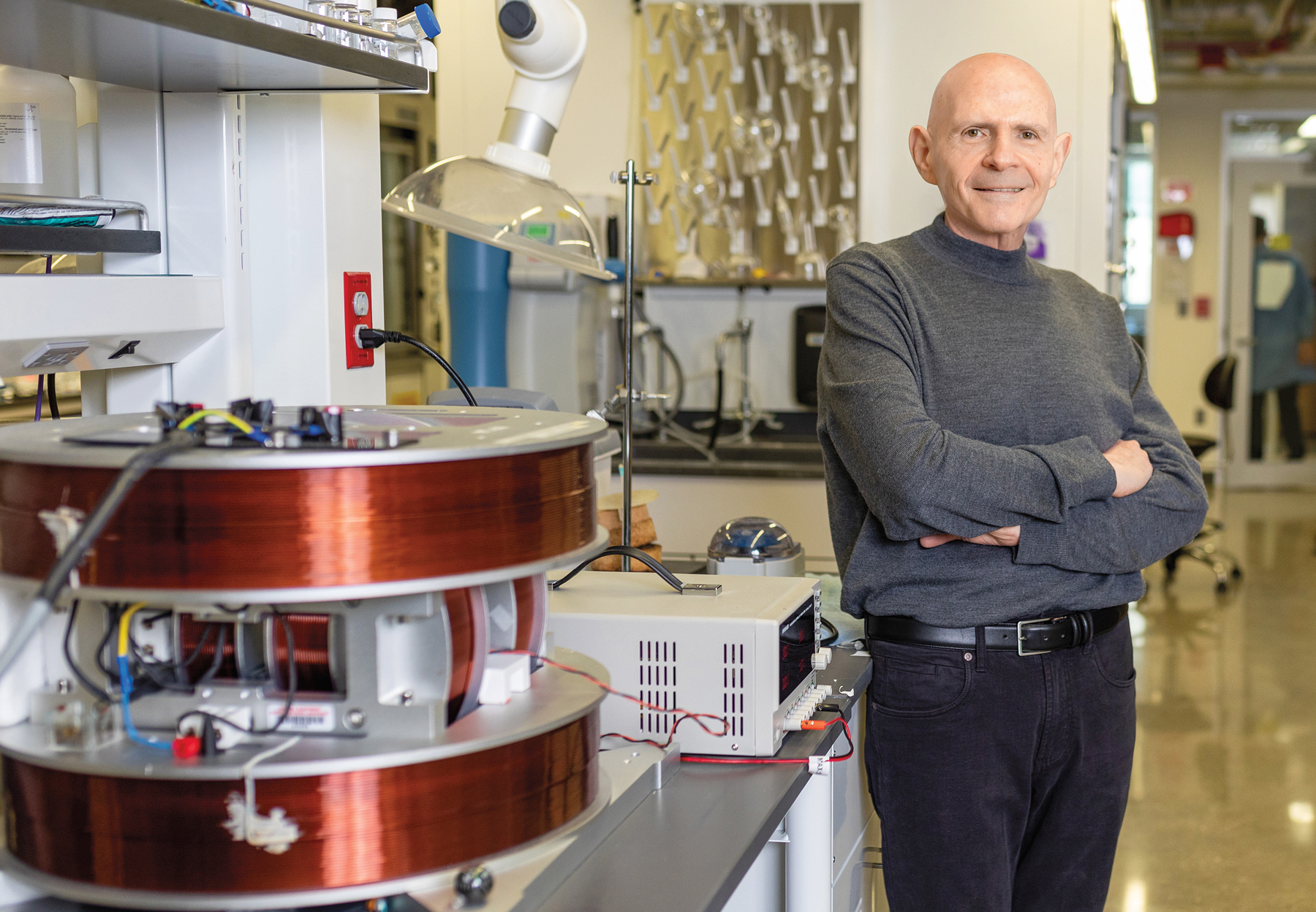
It’s been a journey to get to this point. As a boy growing up in Costa Rica, Stupp immersed himself in the science books his father brought back from business trips to the United States. Both of his parents had fled Eastern Europe as children in the tumultuous years before World War II, and they encouraged him to take advantage of every opportunity to succeed in their adopted country.
When his father developed the first record manufacturing facility in Central America, Stupp began to learn about the electrochemistry needed to make the metallic molds and the science behind the records’ polymeric materials.
Stupp traveled to the U.S. and attended UCLA for his undergraduate degree in chemistry and then earned his doctorate in materials science and engineering at Northwestern. He first joined the Northwestern faculty in 1977 as an assistant professor of biological materials. He left in 1980, and by the time he rejoined the University faculty in 1999, he was beginning to explore the use of nanostructures to spur the body’s repair process.
Using his cross-disciplinary interests, he ultimately forged a career that spans materials science, chemistry, biology and medicine.
Stupp’s spinal cord therapy is a type of biomaterial, meaning it is designed for use in living systems. Made from synthetic or natural materials, biomaterials can be used in permanent implants, in materials for drug delivery and as scaffolds for tissue regeneration, among other applications. Stupp and his lab have developed a broad platform of biomaterials that can send signals to cells, instructing them to do specific tasks needed to rebuild tissue and promote healing.
These new nanofibers deliver two distinct signals that trigger different aspects of spinal cord repair. One signal prompts the long tails of neurons in the spinal cord, called axons, to regenerate and also reduces scarring, which acts as a physical barrier to regeneration. The other signal stimulates the growth of lost blood vessels, rebuilds myelin (the insulating layer around axons that helps transmit electric signals) and promotes the survival of motor neurons.
The biomaterials contain building blocks that naturally exist in the body, and after they’ve induced growth and healing, they biodegrade with no side effects.
Stupp, director of the Simpson Querrey Institute for BioNanotechnology at Northwestern, hopes to bring this spinal cord therapy to clinical trials within a few years (see “Spinal Cord Therapy: What’s Next?” sidebar), and in the meantime he is designing the materials for use in other organs and tissues, including bone, cartilage, muscle and kidneys. He also believes the breakthrough in spinal cord injury research is directly relevant to other key targets in central nervous system repair, including stroke, brain injury and neurodegenerative diseases.
This discovery was the result of more than 20 years of work across disciplines in the Stupp lab. “Regenerative medicine is the ultimate example of interdisciplinary research,” Stupp says. “You need to integrate physics, chemistry, biology, engineering, materials science and medicine.
“I am extremely grateful for the support I received from Kimberly Querrey and the late Lou Simpson ’58 to undertake this challenging and important interdisciplinary research at Northwestern.”
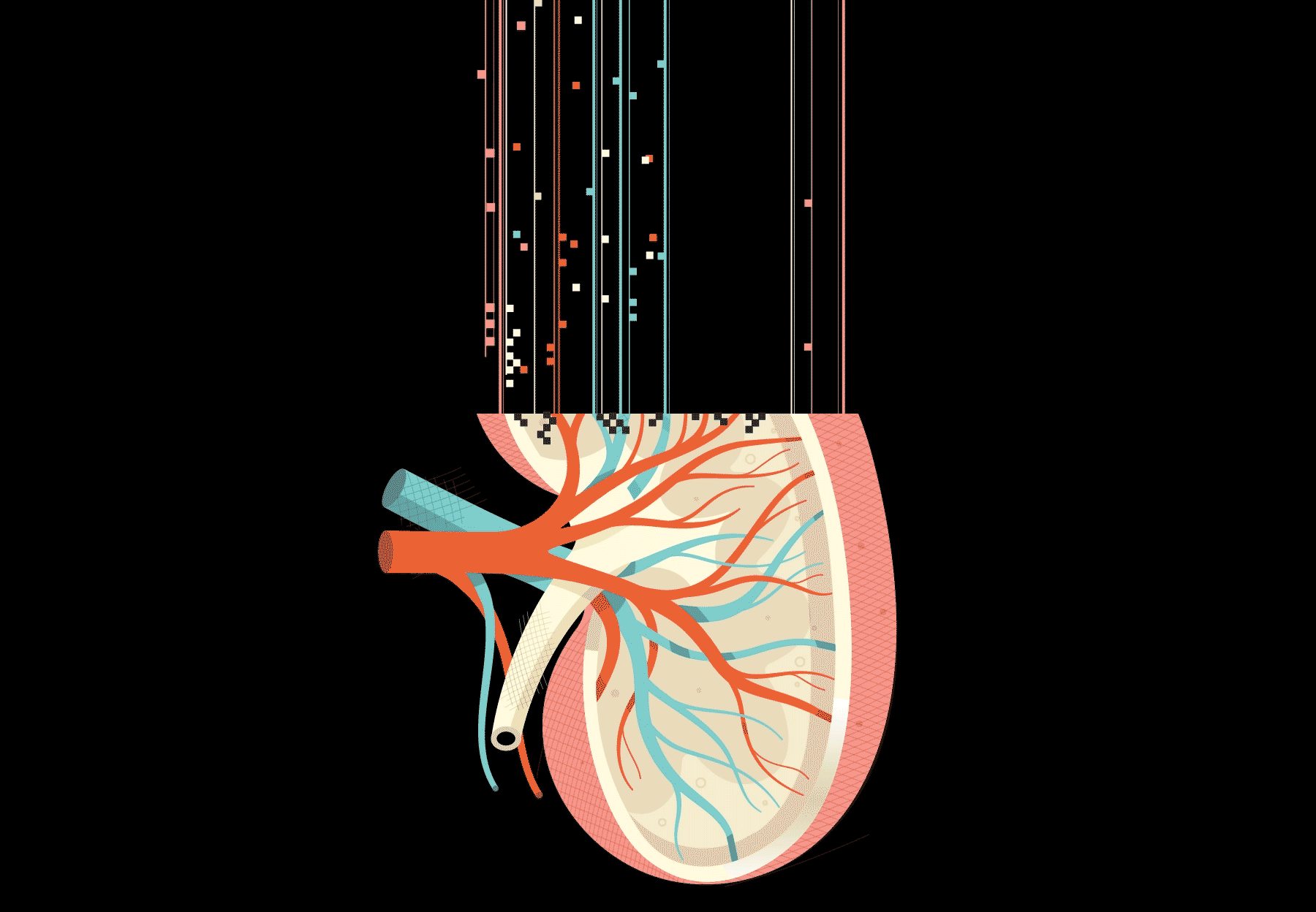
A trained chemical engineer, Guillermo Ameer initially worked in the oil and chemical industries. But as new research fields emerged, Ameer shifted gears early in his career, drawn by the possibility of applying his engineering skills to solve medical problems. In graduate school, he was “surrounded by people who were excited about the possibility of regenerating tissue and organs, given the lack of donors,” he says. “That got me excited and interested in tissue engineering.”
A pioneer in the field of regenerative engineering, Ameer admits that he’s encountered his share of twists and turns on his journey, such as inadequate materials and cell sources for experiments and regulatory structures that were not designed for regenerative medicine. “I thought I would be a billionaire living part time on my own island by now,” he jokes.
But Ameer is now seeing the fruits of his labor.
His understanding of chemistry and biology led to the discovery of a new class of biomaterials that help guide or control cell function to regrow bodily tissue and organs. His biomaterials are based on citrate — a derivative of citric acid — and they have antioxidant and anti-inflammatory properties that encourage growth and healing in the body.
Over the past 20 years, Ameer has used these materials to reduce scarring in blood vessels, regenerate bladder tissue and repair defects in the skull. One material based on this work is now used in a device that helps attach soft tissue grafts to bone during reconstructive surgeries.
More recent work includes a hydrogel dressing, inspired by the protein laminin, which signals cells to help heal diabetic wounds. He’s also collaborating with fellow McCormick School of Engineering professor Evan Scott to develop a material to increase the success rate of pancreatic islet transplantations for patients with diabetes.
Ameer, Daniel Hale Williams Professor of Biomedical Engineering and Surgery, is director of the Center for Advanced Regenerative Engineering (CARE), where faculty are working to commercialize their technologies as well as train the next generation of regenerative engineers. In 2022 CARE received the first training grant from the National Institutes of Health focused on regenerative engineering to support graduate students in biomedical engineering.
“The field has grown tremendously within the last decade. There are now many more people on board with regenerative engineering, and there is much more investment in this sector,” Ameer says. “We are glad to see the excitement and enthusiasm.”
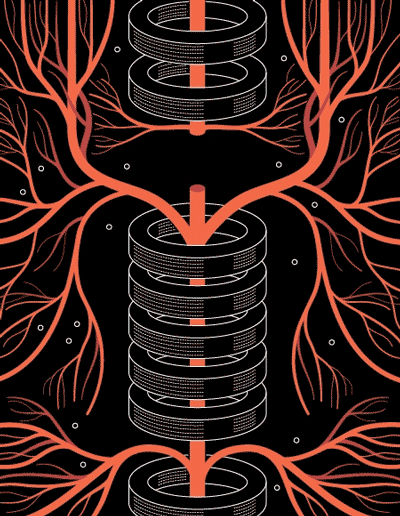 Since the 1970s, John “Jack” Kessler has been trying to figure out how to regenerate damaged nervous systems — the brain and spinal cord, as well as peripheral nerves that extend throughout the body. He began to study growth factors — naturally occurring molecules that stimulate cellular processes during development and healing. He then focused on stem cell therapies for the nervous system, an area of study that became personal in 2001, when his daughter was involved in a downhill skiing accident that left her paralyzed from the waist down.
Since the 1970s, John “Jack” Kessler has been trying to figure out how to regenerate damaged nervous systems — the brain and spinal cord, as well as peripheral nerves that extend throughout the body. He began to study growth factors — naturally occurring molecules that stimulate cellular processes during development and healing. He then focused on stem cell therapies for the nervous system, an area of study that became personal in 2001, when his daughter was involved in a downhill skiing accident that left her paralyzed from the waist down.
“Many people think you can inject stem cells into the body, [and those cells] are then going to do something magical,” says Kessler, Ken and Ruth Davee Professor of Stem Cell Biology and professor of neurology and pharmacology at Feinberg. “But it doesn’t work that way. You must give them an environment where they will flourish, and they must have the appropriate signals to become the sort of cells you want them to become.”
Now, Kessler’s efforts to regenerate the nervous system focus on stimulating growth factors by administering genetic material into the body to treat or stop disease.
Within his lab, he has studied injecting DNA into a patient’s muscle, which then uses the DNA as a template to become a “factory” that produces hepatocyte growth factor (HGF). HGF supports the survival and outgrowths of nerve cells and helps regenerate blood vessels.
The therapy is currently in phase 3 clinical trials for patients with diabetic neuropathy — nerve damage that can occur in the legs and feet of people with diabetes. Earlier clinical trials showed that the therapy both reduced pain and restored nerve function. Nerves grow very slowly — no more than 1 or 2 millimeters per day — so the full response to the therapy will be seen months and years down the road.
If the phase 3 trial goes well, “it will be the first time anybody has a regenerative strategy that actually works [to address] a damaged nervous system,” says Kessler. “It’s very exciting, especially since we’ve been working in this area for so long.”
Working in regenerative medicine requires that Kessler, Stupp, Ameer and others take the long view. Regrowing entire organs and limbs might be decades away, but researchers are headed in that direction.
Stupp, for one, is excited to see this work through until it’s available to human patients. He thinks back to his father, who told him that if he wanted a career in science, he needed to move to the United States, a hub of scientific innovation. “As is the case with many immigrants, we are extremely motivated to succeed. It was not easy for my father to start his record manufacturing facility. He had a lot of obstacles. But he showed me how to overcome those.
“I have that inspiration, too,” he adds. “And there’s no lack of motivation. I will continue to work on this for as long as I can. It’s a good way to stay young.”
Emily Ayshford ’12 MFA is a writer in Chicago.
Rebuilding the BodyMany Northwestern faculty members are working to coax the body to repair and regenerate itself. Here are a few prominent efforts. |
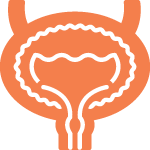
BLADDER: In children born with spina bifida, the spinal cord and urinary bladder do not form properly. Arun Sharma, research associate professor of urology at the Feinberg School of Medicine and biomedical engineering at the McCormick School of Engineering, is studying the use of small molecules to stimulate native bladder tissue stem cells to regenerate functional bladder tissue — with promising early results. “It’s still a work in progress, but my goal is to ultimately apply this process to patients who are suffering from severe bladder dysfunction so they have some semblance of normalcy regarding quality of life,” Sharma says. |
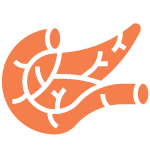
PANCREAS: A key component of regenerative medicine is controlling the immune system. In the case of pancreatic islet transplants, a donor’s insulin-producing islet cells are transplanted into a diabetic patient, allowing their body to once again produce insulin. To ensure that the body does not attack the foreign islet cells, Evan Scott, Kay Davis Professor of Biomedical Engineering, is testing the use of tiny nanocarriers filled with the immunosuppressant drug rapamycin. These carriers target specific cell populations to retrain the patient’s immune system, teaching it to accept or “tolerize” the foreign islet cells. This process of immune tolerance requires only a single short treatment for lifelong benefits, with minimal side effects and without suppressing the body’s entire immune system. In contrast, more standard strategies of immunosuppression require lifelong treatment and broadly suppress the immune system. The Scott lab’s tolerizing nanoparticles also may be used in organ transplantation and the treatment of endometriosis and autoimmune disease. |
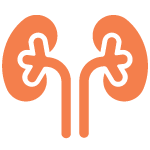
KIDNEYS: Transplanted organs may experience ischemia-reperfusion injury (IRI), which causes major inflammatory immune responses that negatively impact solid organ transplantation outcomes by increasing the rate of tissue or organ rejection. Lorenzo Gallon, professor of medicine and surgery at Feinberg, is working with Samuel Stupp to design a biomaterial that reduces the inflammatory response associated with IRI and could translate to better transplant outcomes for patients. “This material sends signals that speed up the repair and recovery of the kidney affected by IRI and provides a first-of-its-kind therapy for this condition,” Gallon says. |

EYES: Inhibiting or encouraging certain biological pathways — a series of actions among molecules in a cell — can stimulate organs to repair themselves. Susan Quaggin, Charles Horace Mayo Professor at Feinberg, and her team are harnessing the power of these pathways to develop new approaches to regeneration. In patients with glaucoma, for example, fluid builds up in the eye’s drainage system, which can put pressure on — and damage — the optic nerve. Quaggin’s team is developing a drug that exploits a pathway that helps regrow blood vessels in the eye, reducing fluid pressure. “We can harness these pathways to develop new small molecule inhibitors, biologics and nanoparticle approaches to promote not only healthy organ development but also repair and regeneration,” says Quaggin. |
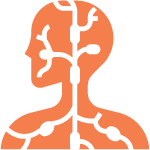
LYMPHATICS: The lymphatic system — a series of tiny vessels and nodes running throughout the body — filters blood, maintains fluid homeostasis and regulates the immune response by clearing out dying cells and bringing in immune cells to fight pathogens. Guillermo Oliver, Thomas D. Spies Professor of Lymphatic Metabolism at Feinberg, found that the lymphatic system is also important in organ development and repair after injury. His group found that the lymphatic vasculature secretes different factors, including the protein Reelin. Researchers in Oliver’s lab showed that Reelin is required for normal heart growth during development, as well as for cardiac regeneration and repair after injury. They delivered Reelin into the heart of adult mice who had just experienced cardiac infarct (an area of dead tissue resulting from failure of blood supply) and found that the protein preserved heart cells and improved cardiac function after the heart attack. |
Reader Responses
I have been spinal injured since 1981 (C4,5,6). I went to the Miami Project to cure paralysis in 1986–87 and did a study to prove that spinal cord injured (SCI) people can ride a FES (functional electrical stimulation) bike. My foundation (RickyPalermofoundation.org) has two of these bikes so other SCI can come and ride in my hometown, Batavia, N.Y. My foundation hosts many events (soccer, basketball and lacrosse clinics for kids, plus comedy shows, live and silent auctions, chicken BBQs and our annual golf tournament),and we are proud to have donated approximately $1.8 million to our local hospitals, YMCA FES bike program and the Miami Project. I ride 7 miles each time and feel as though I am in good shape and can't wait to see someone like you or anyone come up with the CURE!!! My cousin receives your alumni newsletter and sent this article to me. Hope we can keep in touch.
Awareness, awareness, awareness.
—Ricky Palermo Batavia, N.Y.
Great example of Northwestern’s promotion of cross-discipline efforts! Persevere!
—Christopher Combe Gulf Stream, Fla.
What great work. Of a more mundane nature, is there anything in your research that would suggest ways to repair tears to the rotator cuff muscles?
—Jim Bronner '68 JD, Highland Park, Ill., via Northwestern Magazine
You guys are on a roll!
—Willard Fry '59 MD, Wilmette, Ill.
No one has commented on this page yet.
Submit a Response